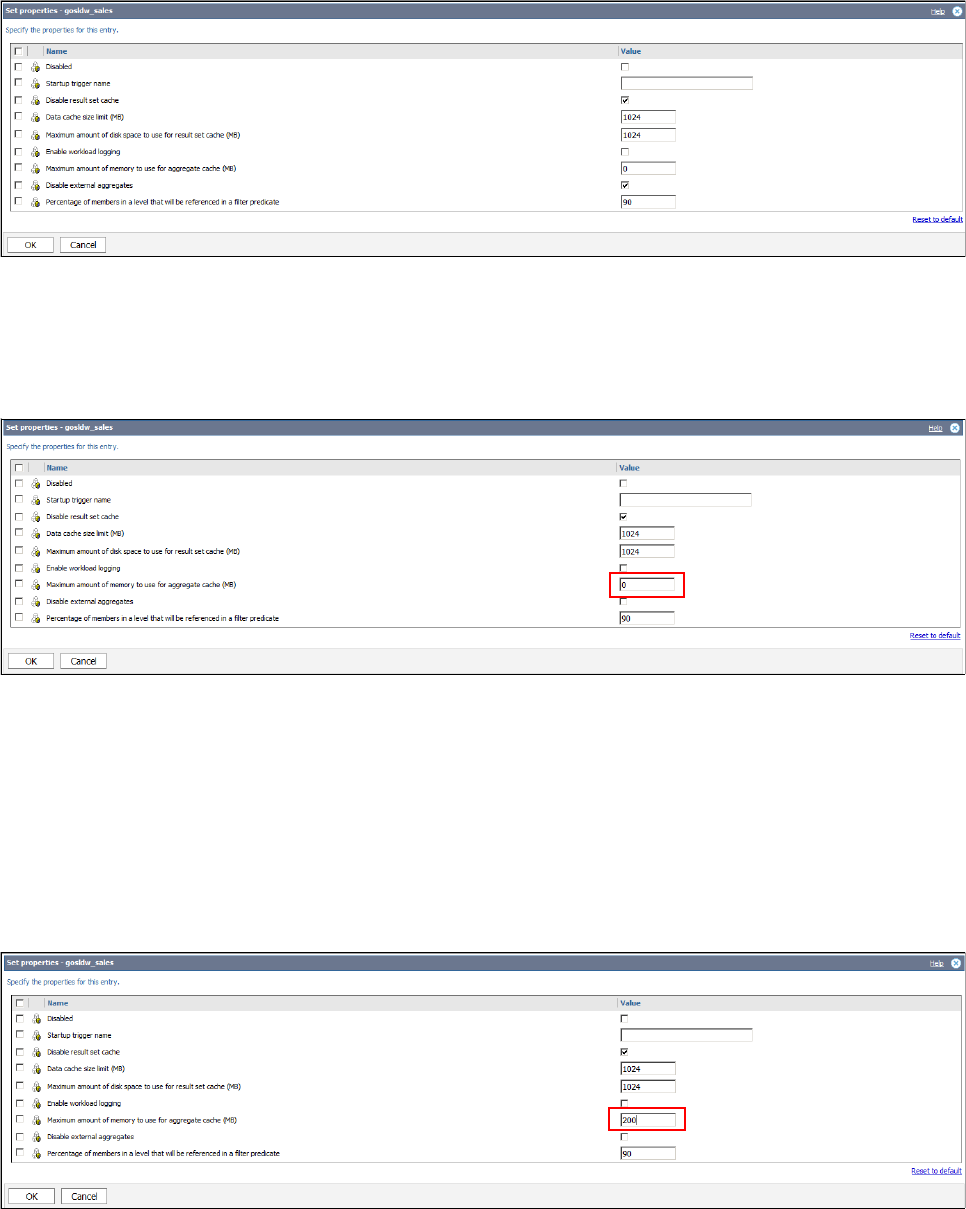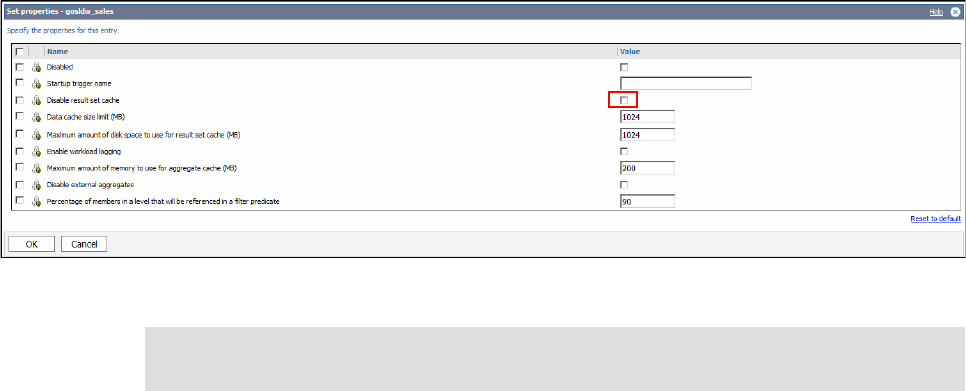
Chapter 10. Troubleshooting 285
6. Log in as the user who holds the access account, and go to My Preferences Personal.
The Credentials section shows the following text (Figure 10-22):
Specify the users, groups or roles that can use the credentials to run
activities.
– If you do
not have a valid credential, then after the text, a hyperlink shows First, you
must create the credentials.
– If you see the following text, then you already have a valid credential:
You can also renew the credentials. Renew the credentials.
Figure 10-22 Set user credentials
7. Click the hyperlink; the page refreshes and your credentials are displayed.
10.8.3 Unexpected data values returned
Because a requested value might be from various caches, it is often necessary to determine
where the incorrect value comes from. The technique to determine from where the value is
retrieved involves disabling and then enabling the various caches.
Disabling all dynamic cube caches
Figure 10-23 on page 286 shows a cube with all the caches disabled. A cube with all the
cashes disabled causes a query to access the database fact table to retrieve the data.

286 IBM Cognos Dynamic Cubes
Figure 10-23 All cache disabled
Enabling in-database summary tables
Enabling allows the query to access in-database summary tables to retrieve the data. To
enable this cache, clear the check mark. See Figure 10-24.
Figure 10-24 External aggregate cache enabled
Enabling the in-memory aggregate cache
This will allow query to access the in-memory aggregates created as part of the Aggregate
Advisor process. These aggregates are typically used by queries performing high-level
analysis.
To enable this cache, set the value of the Maximum amount of memory to use for
aggregate cache (MB) to the value that is used when running the Aggregate Advisor. See
Figure 10-25.
Figure 10-25 Enable aggregate cache

Chapter 10. Troubleshooting 287
Enabling the in-memory query (data) cache
This cache maintains the results of the most recently executed queries. To enable this cache,
remove the check mark. See Figure 10-26.
Figure 10-26 Enable result set cache
Wrong numbers from in-memory aggregate
See 8.4.4, “In-memory aggregate tips and troubleshooting” on page 226.
Incorrect auto summary value
An incorrect value might be because of security restrictions. This subject is too large to cover
in a troubleshooting section. If security was applied to the cube and incorrect summary values
are being returned, you should thoroughly review Chapter 7, “Dimensional security” on
page 147 to ensure that this security is not the cause of the issue.
Query returns empty cell for a calculated member
This issue is likely caused by the reference of a secured member by a calculated member
(not a measure). The reason is because the value of the secured member is treated as null in
the calculation. Further details of calculated members are in 7.7, “Calculated members” on
page 164.
Wrong numbers involving multigrain dimensions
This problem might be the result of incorrect modeling. This problem occurs when facts exist
at different levels of the same dimension, for example monthly sales target and daily sales
totals. If modeled incorrectly, a query might be generated that incorrectly displays values,
which is sometimes referred to as
double counting.
Note: When making any changes to configuration settings of a cube, the cube must be
restarted for the changes to take effect.
..................Content has been hidden....................
You can't read the all page of ebook, please click here login for view all page.
